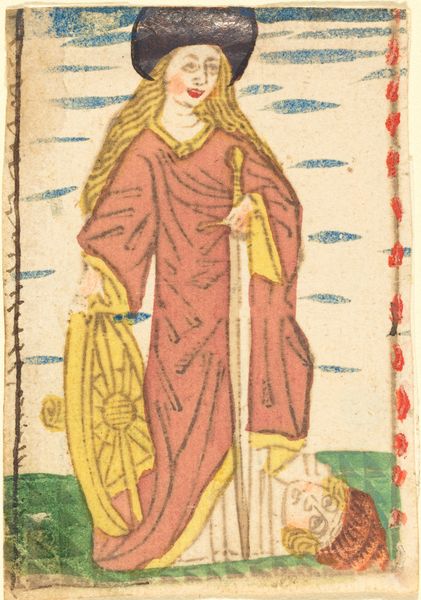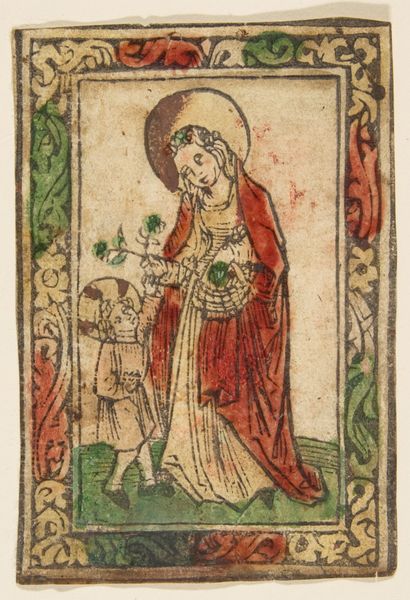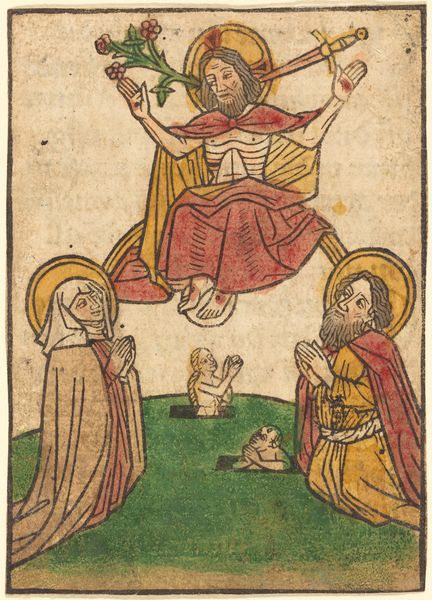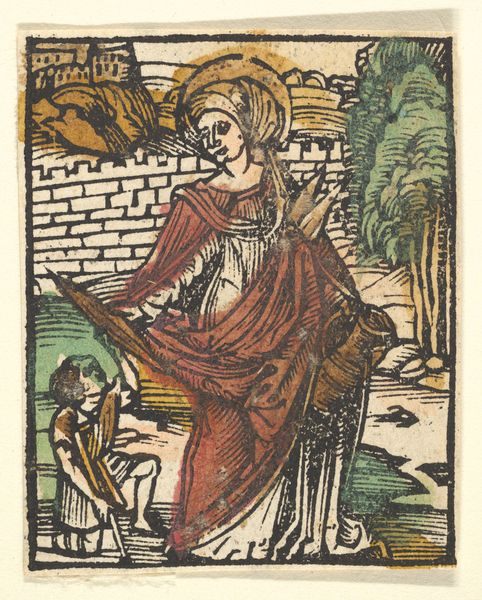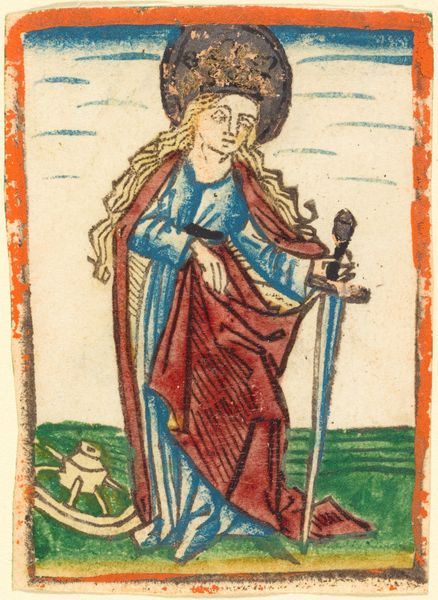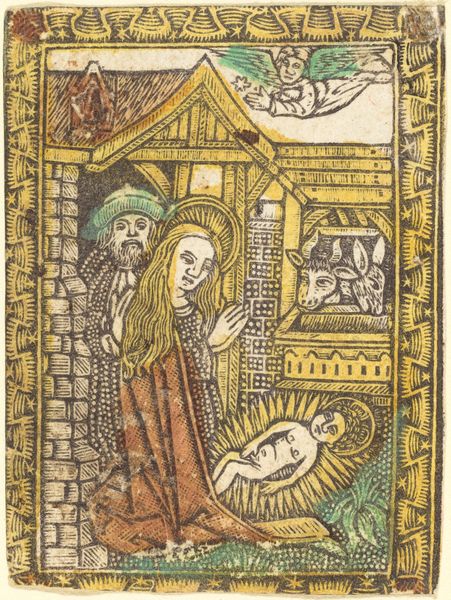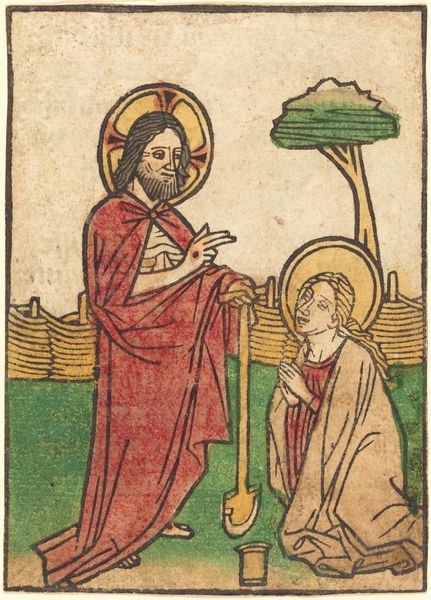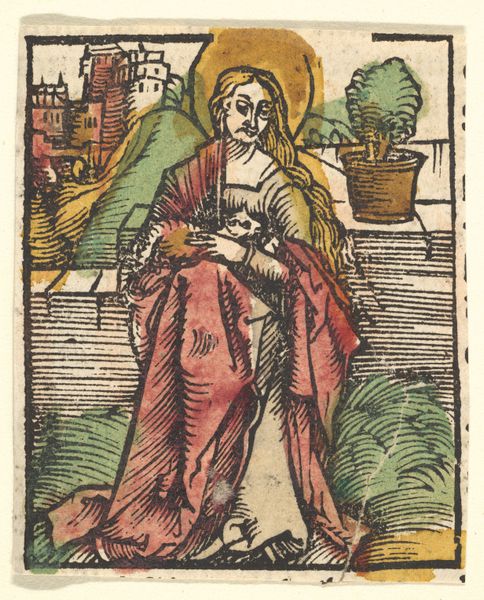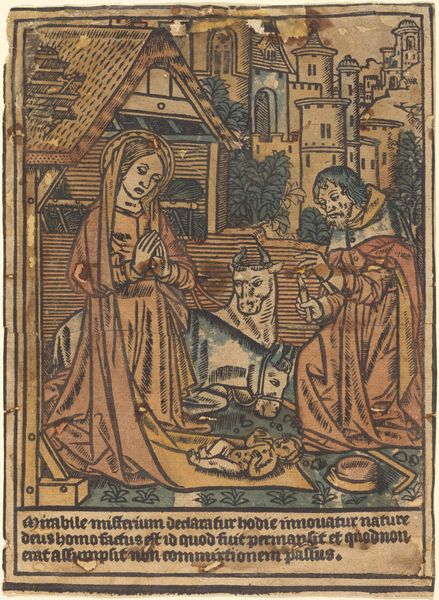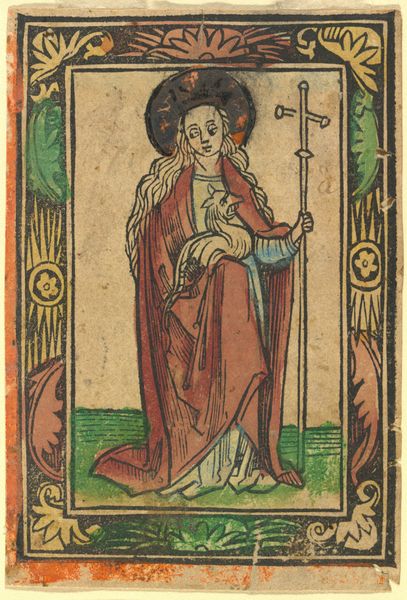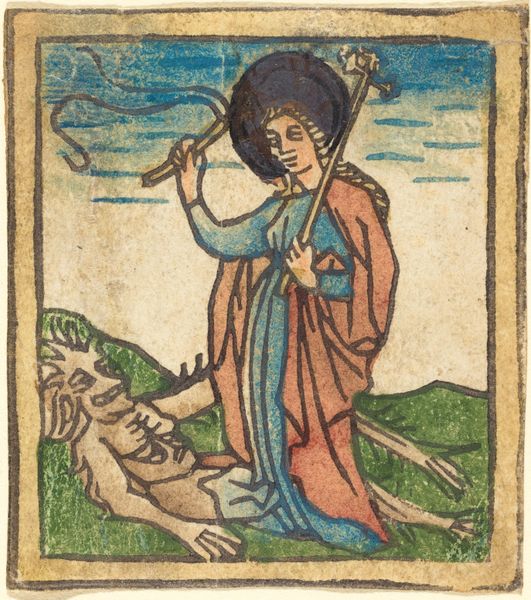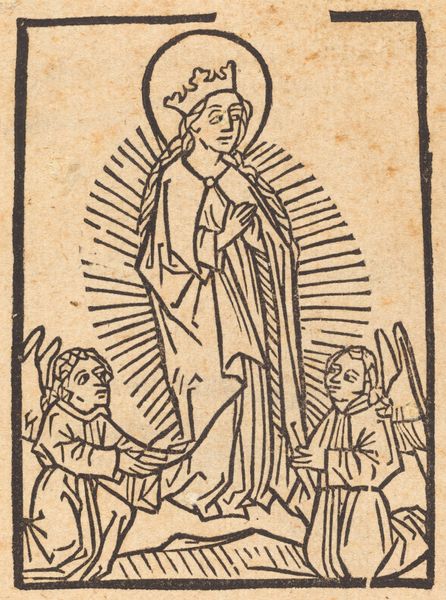
print, woodcut
#
medieval
#
pen drawing
# print
#
figuration
#
woodcut
#
northern-renaissance
#
miniature
Copyright: National Gallery of Art: CC0 1.0
Editor: Here we have a small woodcut print entitled *Saint Agnes*, made around 1490. It’s a simple image, yet the figure seems oddly calm, even with the lamb nuzzling her and all the text crammed around the edges. What catches your eye about this piece? Curator: The immediate connection for me lies within the symbol of the lamb, a powerful evocation in Christian iconography. Think about its implications: innocence, sacrifice, gentleness. Here, juxtaposed with Saint Agnes, a virgin martyr, the lamb amplifies her own purity and willingness to be sacrificed for her faith. Do you see how the artist has subtly linked their destinies? Editor: I see what you mean. The lamb echoes her own sacrifice. But what about the palm she’s holding? Curator: The palm branch is another key symbol, directly signifying martyrdom. Notice how it’s positioned—almost protectively cradled. It acts as a visual bridge, connecting the viewer to Agnes's ultimate fate and her unwavering faith. It's fascinating how these objects become shorthand for complex narratives and values. Can you imagine the emotional weight such symbols carried for viewers in the 15th century? Editor: Definitely more weight than they might for us today, I imagine. The symbols provided a direct link to their faith and the stories of the saints. I’m starting to see how much these images would mean to viewers in that era. Curator: Indeed. It reveals how deeply interwoven visual language was within their cultural understanding. The continuous use of such symbolic visual imagery solidifies these meanings over time. What do you make of the halos that both figures have? Editor: Another echo connecting the two, indicating their holiness and significance. Thanks, that clarifies so much!
Comments
No comments
Be the first to comment and join the conversation on the ultimate creative platform.
